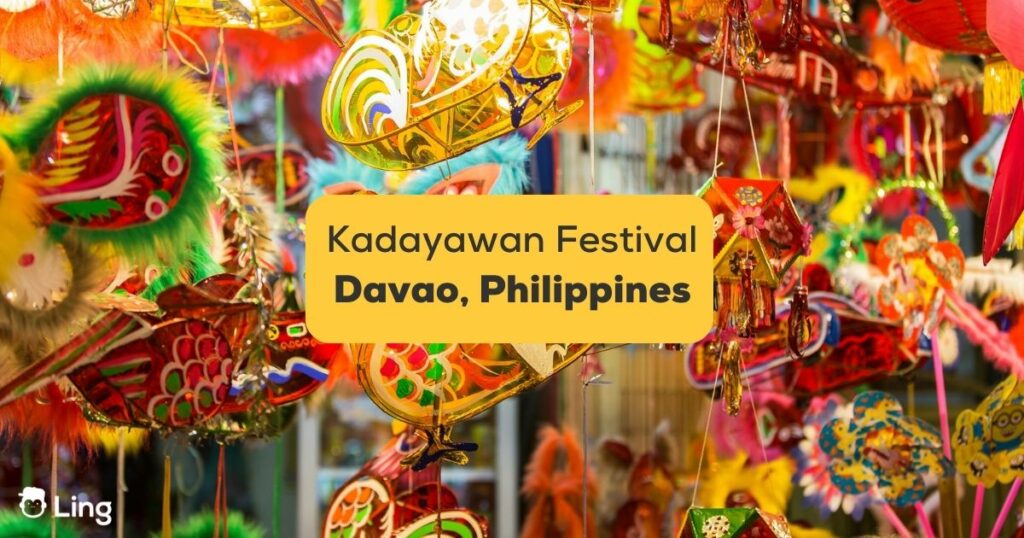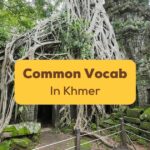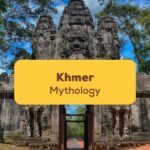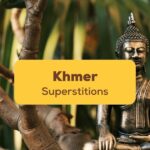Ever danced on the streets to the pulsating beat of drums? Or got lost in a sea of vibrant costumes that seemed straight out of a color palette? My first time at the Kadayawan Festival (or the Festival of Festivals) felt just like that. During August, Davao’s streets come alive, a tapestry of Filipino flavors wafting through the air and an irresistible beat that makes even the most rhythm-challenged (like yours truly) tap a foot.
While the festivities had me at ‘kumusta’ (or hello in Tagalog), it was more than just the pomp and pageantry. It’s where unity met heritage, sprinkled with pure joy. If you’re itching for an authentic Filipino cultural plunge, buckle up as I guide you through the kaleidoscope called the Kadayawan Festival.
What Is Kadayawan Festival?
At its heart, Kadayawan is a thanksgiving festival. Borrowing its name from the Mandaya term “madayaw”, meaning something cherished, it’s a tip of the hat to nature’s generosity. Rooted in indigenous tradition, it celebrates the bountiful harvests of fruits, vegetables, and flowers in Davao. This gratitude towards nature’s abundance is vividly portrayed through colorful floats decorated with the season’s freshest and best produce.
Given that Davao is home to numerous indigenous tribes, each with its unique culture, dialect, and traditions, the Kadayawan Festival is a platform for these tribes to showcase their heritage, from intricate dance routines and melodious songs to the display of age-old crafts and arts. And trust me…it’s a rare and delightful opportunity for visitors to gain an understanding of the Philippines’ ethnic diversity.
And while the roots are tribal, don’t be surprised if you find yourself grooving to a modern beat. With today’s Kadayawan infusing contemporary events — think pop concerts and bustling trade fairs — it’s a tantalizing blend of the old and the new. A dance of traditions and modern festivities, ensuring there’s a flavor for everyone.
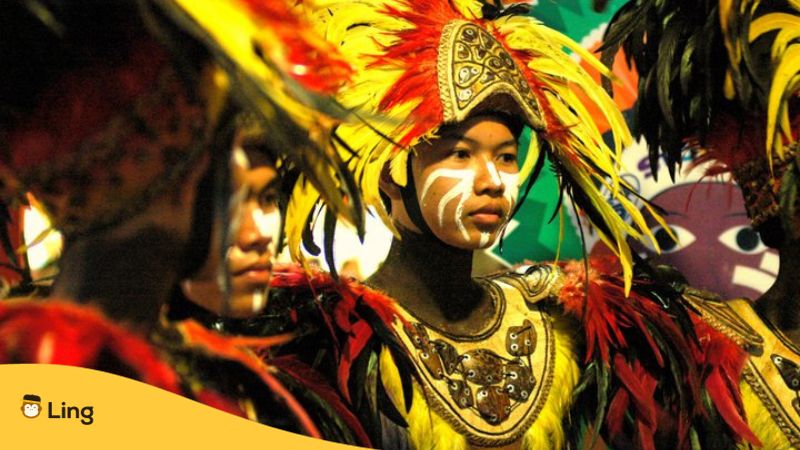
Why Is The Original Name Of Kadayawan Festival?
Surprisingly, the festival was originally termed “Apo Duwaling.” Quite the mouthful, isn’t it? This quirky title was a tribute to Davao’s trio of treasures: “Apo” for Mount Apo (sky’s the limit with this peak!), “Du” from the irresistible Durian, and “Waling” inspired by the elusive Waling-Waling orchid. This was Davao’s nod to nature’s bounty and the heartfelt connection its people felt with the land.
But as all good stories go, with fame came evolution. As the festival’s popularity spread beyond tribal borders, there was a need for a name with a broader embrace. Enter the scene in 1988, Mayor Rodrigo Duterte, with a brilliant rebranding move. The festival was christened “Kadayawan,” plucked from the Mandaya dialect’s term “Madayaw” – a thumbs up to anything good, cherished, or top-notch. Because let’s face it, who doesn’t love a good celebration?
When Is Kadayawan Festival Celebrated?
Unlike many festivals that are determined by specific dates on the calendar, the Kadayawan Festival has its roots in the natural world. Historically, the indigenous people of Davao celebrated this festival as a thanksgiving for a bountiful harvest, and as nature’s cycle doesn’t strictly adhere to our Gregorian calendar, the exact timing of the festival took cues from the land’s yield.
Fast-forward to today, and while tradition still hums in the background, the festival has found a steady beat. It grooves into action in the third week of August. Why this week? It’s a nod to the conventional harvest period, keeping the festival’s soul genuine and rooted.
But if you think the party only kicks off mid-August, think again! Davao starts getting its festive groove on from the beginning of the month. Art. Food. Street performances. You name it. The pre-festival fever sets in early. By the grand parade in the third week? Davao is a full-blown fiesta!
Why August?
The month of August is significant not just for its proximity to the traditional harvest season, but also because of the favorable weather conditions. While the Philippines experiences rainfall around this time, the rain often plays a refreshing counterpart to the warm tropical climate, ensuring that the festivities are vibrant yet comfortable.
So, if you’re planning to dive deep into the Kadayawan spirit, block out August. While the primary events occur in the third week, the build-up events offer a more relaxed and intimate understanding of Davao’s culture and traditions.
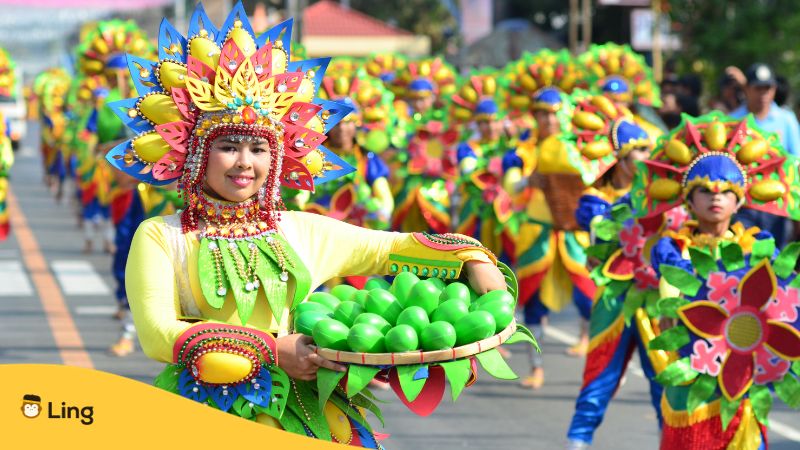
How Is Kadayawan Festival Celebrated?
Itching to join in on the celebrations? If you are, then allow me to pull back the curtains further on this festive spectacle.
- Indak Indak sa Kadalanan – This street dance event features performances that mirror the traditions, tales, and myths of the various indigenous tribes of Davao.
- Street dancing competition – Usually, these dances narrate tales of ancestry and nature, each tribe sways to its own unique beat.
- Floral float parade – Private businesses and schools vie for the ‘Best Float’ crown, showcasing creations that are a feast for the eyes. The winners will be determined by the Davao city government.
- Fruitful feasts – Food stalls dish out local culinary gems, tantalizing tastebuds throughout the festival.
- Art on display – Local craft masters showcase their treasures, from ornate beadwork to pottery, proving that Davao’s talent runs deep.
- After dark festivities – The city doesn’t sleep; concerts and shows light up the nights. A mixtape of traditional tunes and contemporary jams keeps the energy high.
- Hiyas ng kadayawan – This is a beauty pageant where participants are draped in traditional garb and expected to showcase their knowledge and pride in their heritage.
- Gratitude Rituals – Tribal leaders hold rituals, a nod to nature’s bounty and a wish for future prosperity.
Tagalog Words For Kadayawan Festival
And, like the secret sauce to any cultural dish, language is the flavor enhancer. Not fluent in Filipino? No worries. Whether you’re shaking a leg on the street or cheering from the sidelines, here’s your cheat sheet to some Kadayawan-centric Tagalog terms.
| English | Tagalog |
|---|---|
| Festival | Pista |
| Dance | Sayaw |
| Music | Musika |
| Tribe | Tribo |
| Celebration | Pagdiriwang |
| Street | Kalsada |
| Fruit | Prutas |
| Beauty | Kagandahan |
| Tradition | Tradisyon |
| Indigenous People | Katutubong Tao |
| Harvest | Ani |
| Gratitude | Pasasalamat |
| Parade | Parada |
| Costumes | Kasuotan |
| Floats | mga Karo |
Learn Tagalog With Ling
The Kadayawan Festival isn’t just a visual delight; it’s an auditory treat of stories, chants, and interactions that pulsate with the heartbeats of Davao. Want to catch more than just the beats? How about the words and stories behind them?
It’s time to check out the Ling app!
It’s your pocket-sized ticket to diving deeper into the festival. Available on both the App Store and Play Store, this nifty app doesn’t just help you string along a couple of Tagalog phrases. It submerges you into the Filipino culture, ensuring every “Kamusta!” (Hello!) and “Salamat!” (Thank you!) you utter feels just right.
So, ready to groove, chat, and celebrate Kadayawan like a local? Grab the Ling app, and let the language lead you to the heart of Davao’s grand fiesta.
